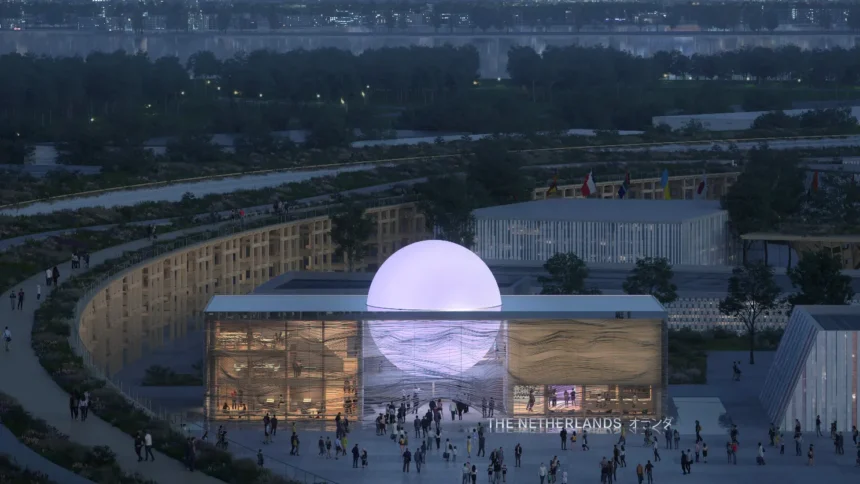Combining creativity with sustainability and earthquake resilience, these expo 2025 pavilions reflect bold design visions from around the world.
Uzbekistan Pavilion– Expo 2025
Architect: Atelier Brückner

Inspired by Silk Road caravanserais, this pavilion features a brick-clad base symbolizing earth and a lush wooden garden level accessible via a rising platform. Visitors are immersed in a story of heritage, innovation, and cultural exchange.
Bahrain Pavilion
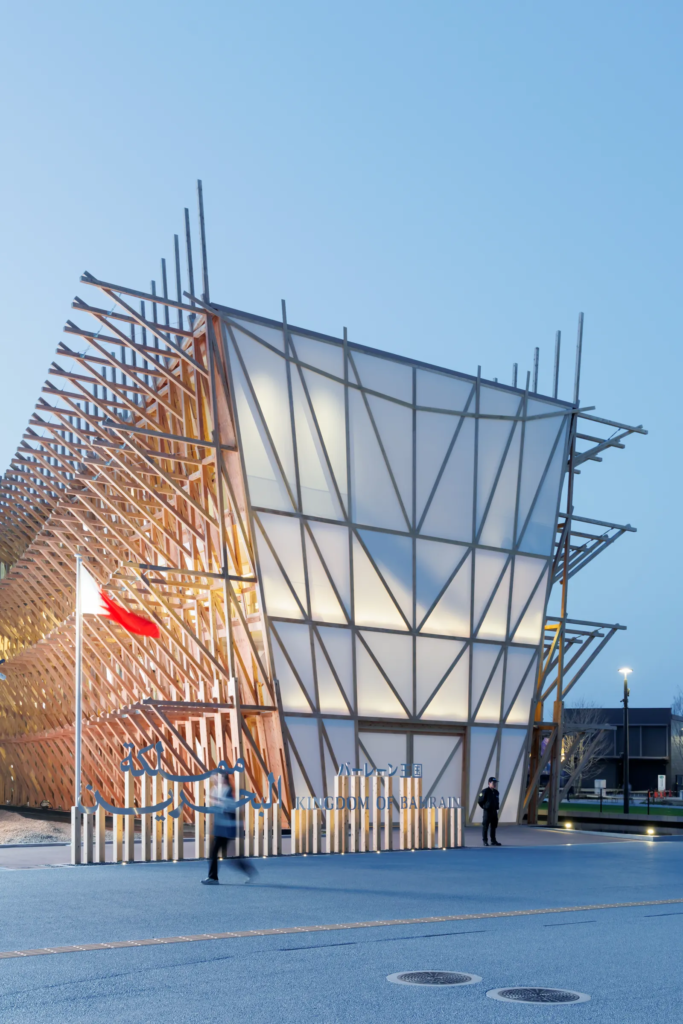
Architect: Lina Ghotmeh
Taking cues from the traditional Bahraini dhow, this structure is built from 3,000 pieces of unengineered wood with no adhesives or foundations. Water channels cool the structure naturally, evoking Bahrain’s maritime identity.
Chile Pavilion
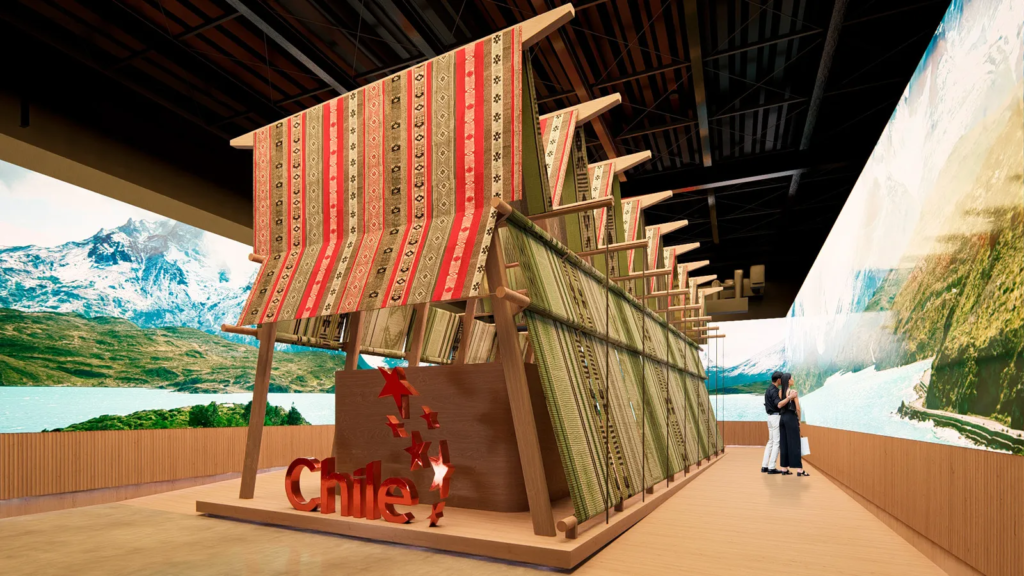
Designer: Constructo Collective
With a modular, wooden frame inspired by nomadism and the Mapuche people’s traditional fabrics, the Chile Pavilion emphasizes adaptability and sustainability in line with the circular economy.
United Arab Emirates (UAE) Pavilion
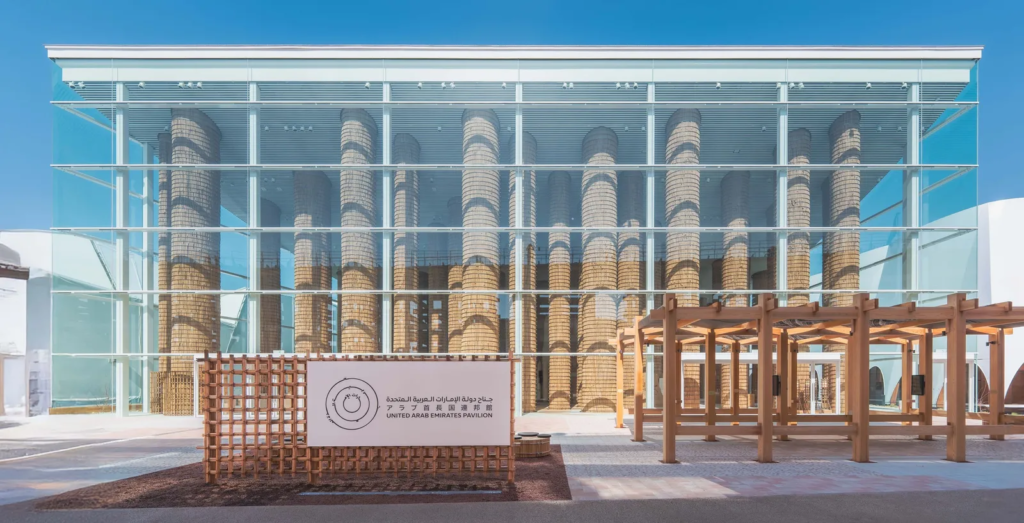
Highlights: 90 wooden columns, up to 16m tall
Designed using agricultural waste and Datecrete, this pavilion resembles a date palm forest, symbolizing heritage and innovation. It blends Emirati and Japanese architectural traditions.
Saudi Arabia Pavilion

Architects: Foster + Partners
Inspired by traditional Saudi villages, this low-carbon structure features angular forms, a native plant forecourt, and immersive audiovisuals. It’s designed for disassembly and includes solar and rainwater harvesting systems.
Azerbaijan Pavilion
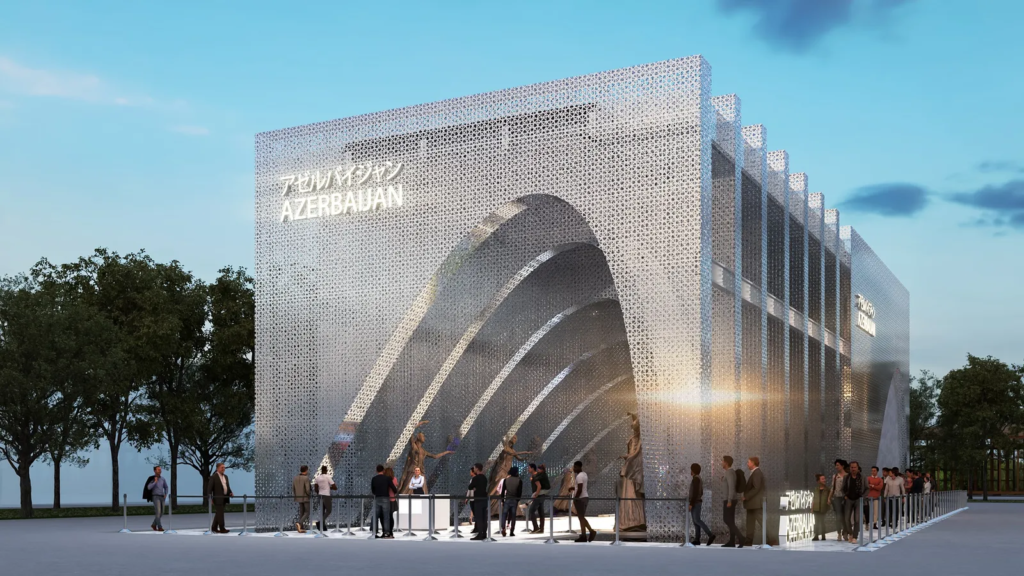
Designers: Bellprat Partner & Eleven
The design follows the poetic journey of Seven Beauties by Nizami Ganjavi, with seven arches representing different cultural dimensions. A symbolic tree installation emphasizes cross-cultural friendship and unity.
The Netherlands Pavilion
Architect: RAU Architects
This circular economy-driven structure features a glowing “man-made sun” as its centerpiece, promoting clean energy and collaboration. All materials are logged for future reuse on the Madaster platform.
Portugal Pavilion
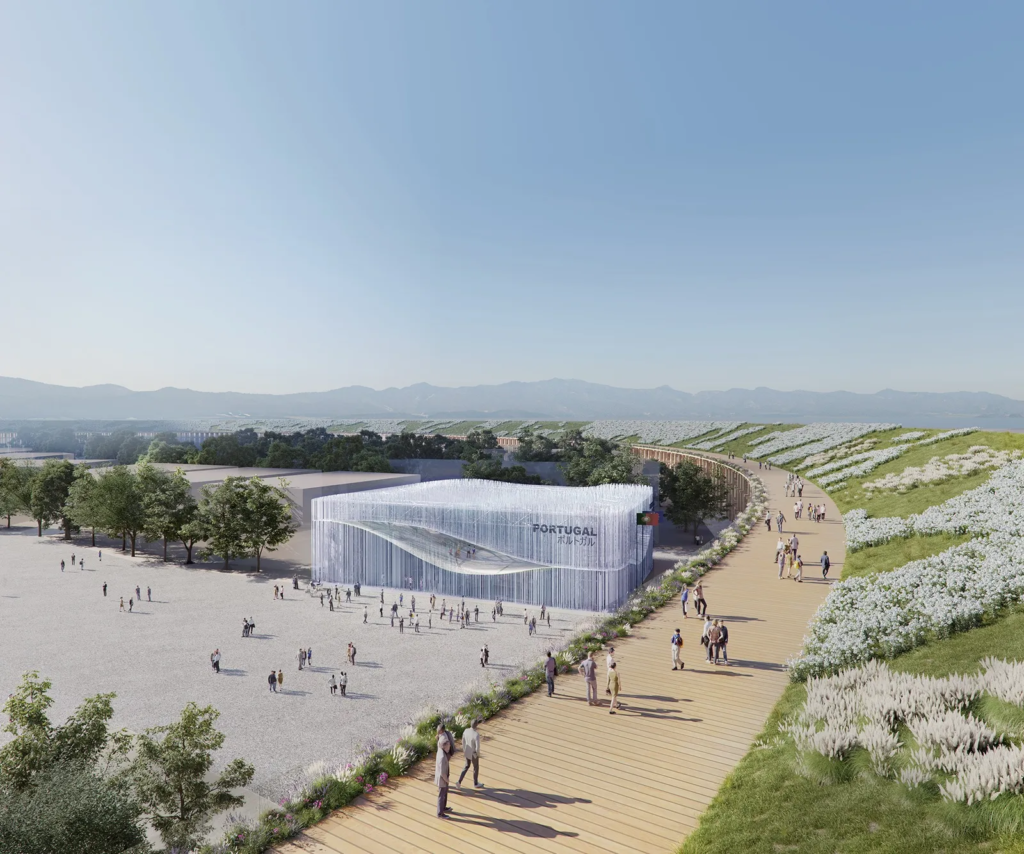
Architect: Kengo Kuma & Associates
Flowing ropes and recycled fishing nets form a fluid ocean-inspired structure. It highlights Portugal’s maritime legacy while celebrating the spiritual symbolism of ropes in both Portuguese and Japanese culture.
Qatar Pavilion

Architect: Kengo Kuma & Associates
Curved wooden forms and a sail-like white fabric recreate the feel of traditional sambuk boats. The design honors Qatar’s pearling history and celebrates craftsmanship across two cultures.
Oman Pavilion

Theme: A Tale of Land, Water and People
This open-air pavilion mimics red canyon landscapes with flowing ramps, waterfalls, and floating bubbles. It’s a serene, sensory journey aligned with the Expo’s Saving Lives sub-theme.
Czech Republic Pavilion

Architect: Apropos Architects
Featuring a glowing Bohemian Crystal façade, this glass-and-CLT-panel structure symbolizes creativity and motion. Visitors ascend a ramp around a central auditorium, experiencing changing light and weather through transparency.


